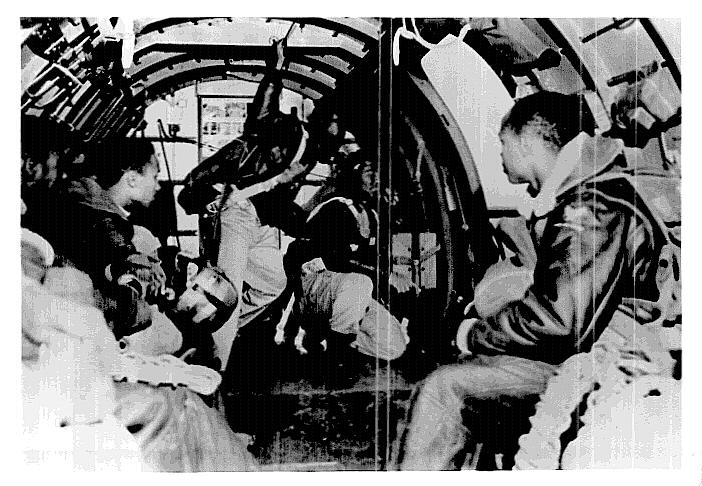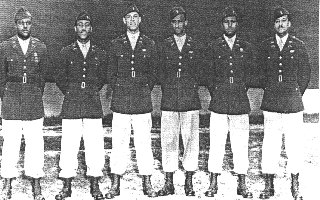US AIRBORNE
The 555th Parachute Infantry Battalion was activated following a recommendation made in December 1942 by the Advisory Committee on "Negro" Troop Policies, chaired by the Assistant Secretary of War, John J. McCloy. Upon approving the committee's recommendation for a black parachute battalion, General George C. Marshall, the Army Chief of Staff, decided to start with one company. On February 25, 1943, the 555th Parachute Infantry Company was established.
On December 19, 1943, the Army Ground Forces Headquarters authorized the activation of the company as a fully "Black" unit, with both officers and enlisted men being African American. All members of the unit were required to be volunteers, with the cadre of enlisted soldiers chosen from the personnel of the 92nd Infantry Division at Fort Huachuca, Arizona. The company was officially activated on December 30, 1943, at Fort Benning, Georgia. After several months of training, the unit moved to Camp Mackall in North Carolina, where it was reorganized and redesignated on November 25, 1944, as Company A of the newly created 555th PIB.
The battalion did not serve overseas during World War II. However, in May 1945, it was sent to the West Coast of the United States to combat potential forest fires that could have been ignited by Japanese incendiary bombs. Although this threat was never considered serious, the 555th PIB fought many other forest fires. Stationed at Pendleton Field in Oregon, with a detachment in Chico, California, the brave men of this unit participated in numerous hazardous firefighting missions throughout the Pacific Northwest during the summer and fall of 1945, earning it the nickname "Smoke Jumpers," in addition to "Triple Nickles."
Shortly after returning to Camp Mackall in October 1945, the 555th Parachute Infantry Battalion was transferred to Fort Bragg, North Carolina, where it remained for the next two years. During this time, the unit was attached to the 82nd Airborne Division.
When the battalion was inactivated on December 15, 1947, most of its personnel were assigned to the new 3rd Battalion of the 505th Parachute Infantry Regiment of the 82nd Airborne Division. On August 22, 1950, the 555th PIB was officially disbanded.




















